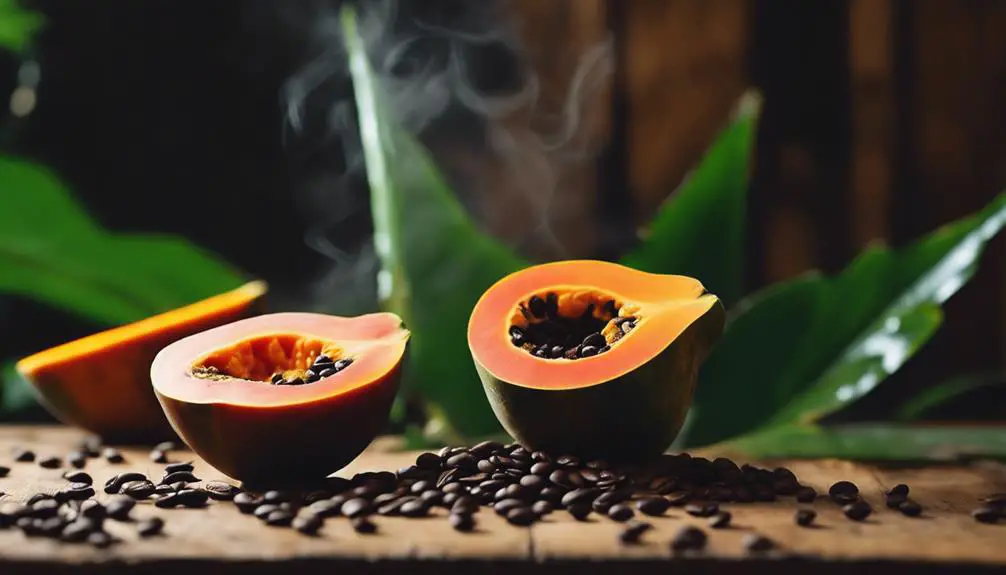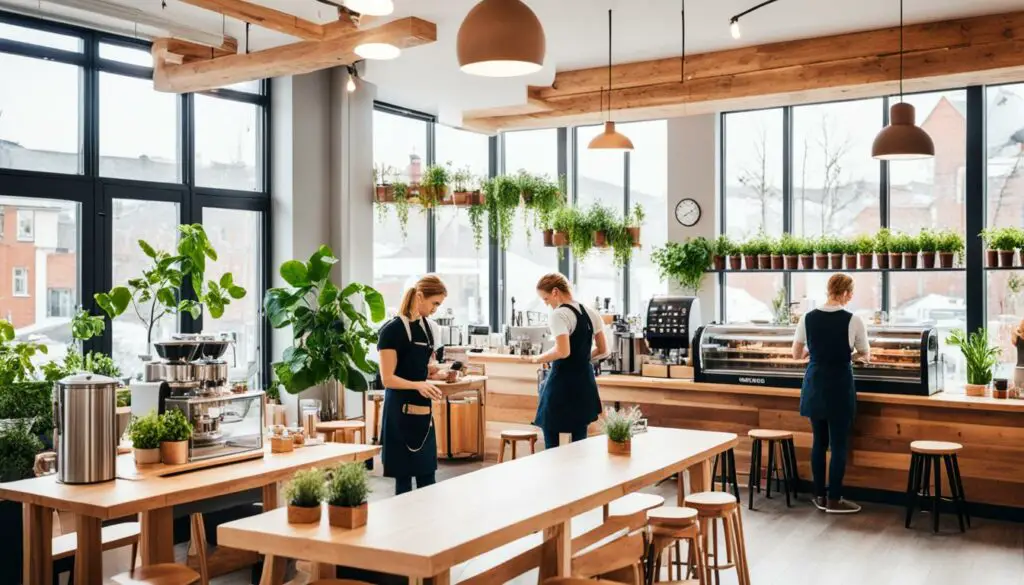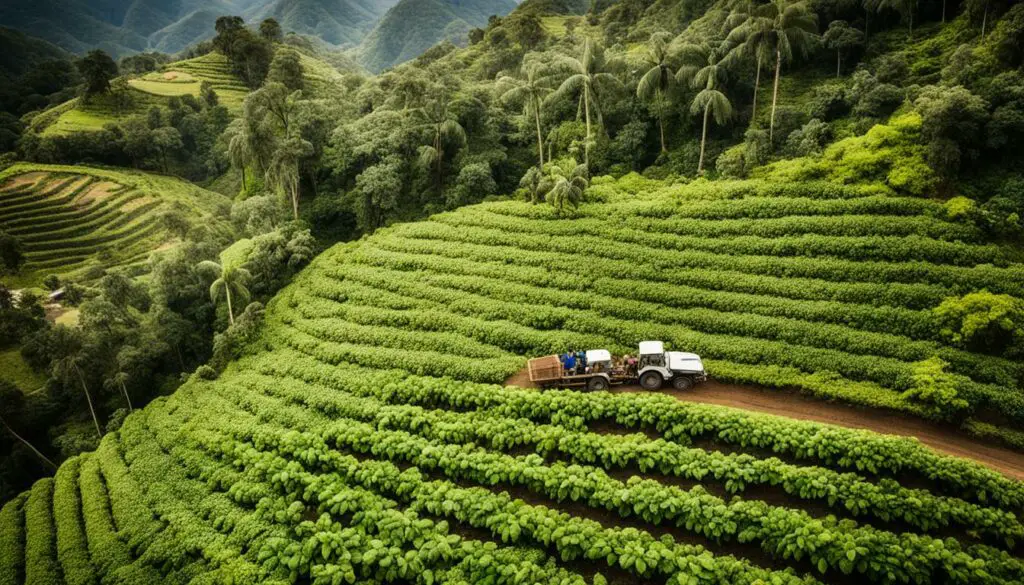At Bushy Beard, we start off every morning with a hot cup of Joe to give us that much-needed caffeine boost and kick-start our day. And we are not alone. 64% of Americans drink coffee every day. Whether you frequent your local coffee house or prepare your coffee cup at home, the coffee-loving lover community is ever-growing.
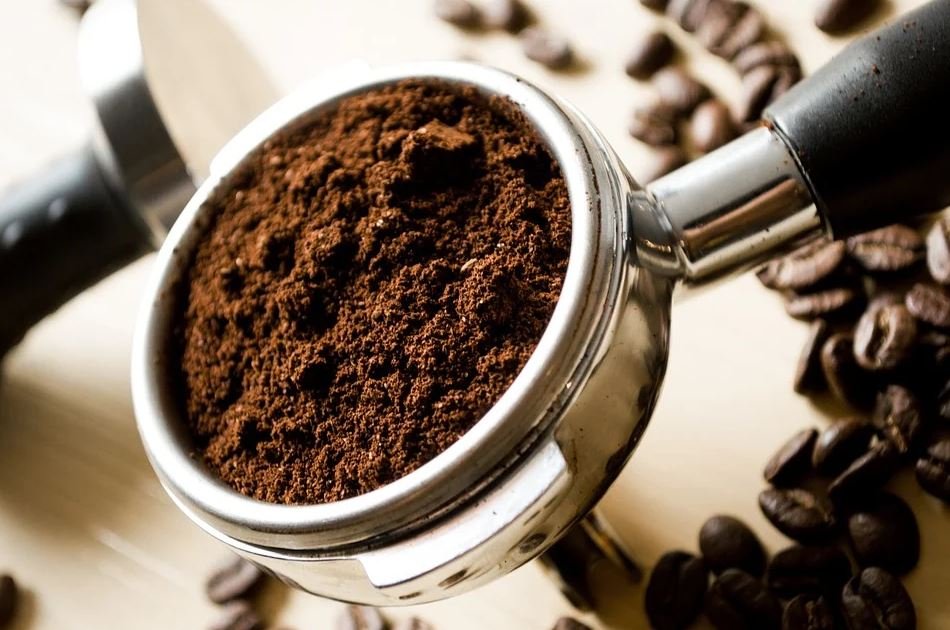
When it comes to preparing your brew at home, as 79% of Americans do, there are a number of factors that can make or break the flavor of your beverage. Even in spite of acquiring the best coffee beans, factors such as brewing temperature, brewing time, oxidation, over-extraction of the coffee grounds, and the size and consistency of the coffee grounds can alter the flavor of your coffee. It’s important to be aware of these variables in order to produce a delicious coffee cup every time.
This blog will be focusing on one of the most crucial factors in preparing excellent coffee – the coffee grind size. The coffee grind size chart lets us know the different sizes for different brewing methods so you can alter the size of your coffee grounds according to the type of coffee you are making and enhance the flavor in every cup.
Freshly ground coffee is always best, so if you’re a coffee lover who prepares coffee at home and you haven’t got a grinder yet, now is the time.
How does coffee grind size impact the extraction process?
If you really want to make the best coffee at home, it’s important to know about the factors that can impact flavor quality throughout the brewing process. When the coffee beans are ground down, using a coffee grinder, the coffee grounds need to be of a consistent size in order to dissolve evenly in the hot water. When hot water is added to your coffee grounds, the process of extraction begins. This is where the flavor of the coffee grounds is released and your coffee grounds become an enjoyable beverage.
Each particular coffee brewing method requires differently sized coffee grounds in order to produce the desired coffee flavor. For example, using an espresso machine to make an espresso requires finely sized coffee grounds, as an espresso requires a maximum surface area to thoroughly extract the coffee beans under pressure and in such a short space of time. However, an Aeropress coffee maker would require medium-sized coffee grounds as the brewing time is roughly 3 minutes, longer than an espresso but shorter than say, a french press. Medium brewing time equals a medium coffee grind size.
Not only the type of coffee, but the type of coffee maker used may require a specific coffee grind size to prevent clogging and damage to the coffee machine. Check out: How to clean a coffee maker using baking soda.
Suppose you are using a French press. Ideally, you want to use coarse coffee grounds for this style of the coffee maker. If the coffee grounds are too fine, you’ll find the plunger hard to press down and you could over-extract the coffee grounds, leading to a bitter-tasting coffee. The French press brewing method usually takes about 5-10 minutes, so using coarser coffee grounds will help you achieve a better flavor from this process.
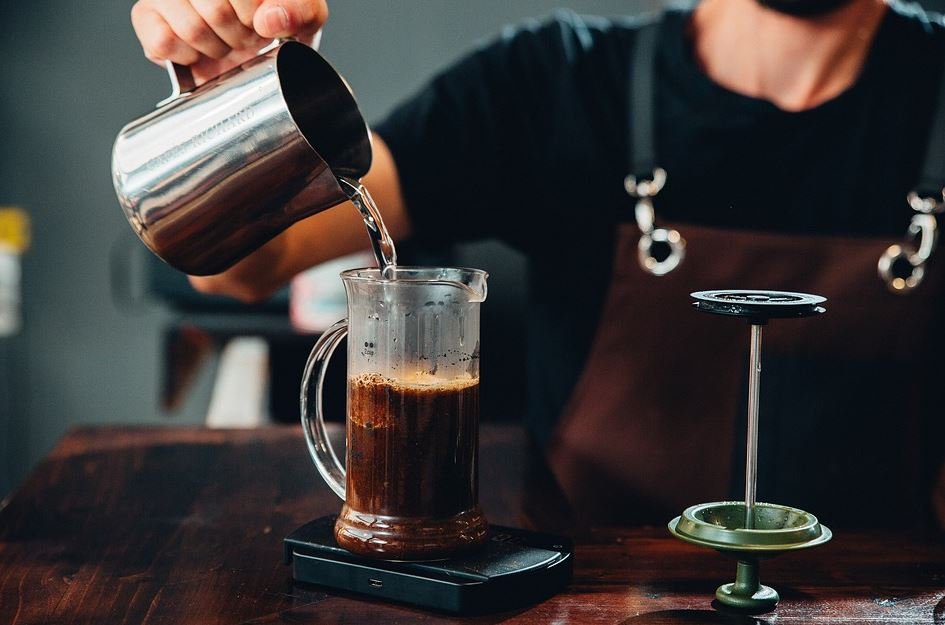
Using coarse coffee grounds in a french press will also ensure that you don’t get any micro coffee grounds sneaking through the press filter and making their way into your coffee cup accidentally. But remember, if the coffee grounds are too coarse you run the risk of under extracting the coffee beans which will give your beverage an unpleasant salty, acidic, or sour taste.
Why Should You Grind at Home?
As we mentioned before, grinding your coffee beans at home is a sure-fire way to improve the flavor quality of your coffee and get the best out of your coffee beans. Although buying pre-ground coffee is easier, freshly grinding your coffee beans helps preserve the flavor of your coffee which begins to diminish once exposed to oxygen. This process is called oxidation. Pre-ground coffee will have less flavor than if you were to grind your coffee beans at home. If you don’t already have a grinder at home, it might be time to get one. Check out our blogs on coffee grinders, to help you find the best coffee grinder for you:
To prevent damage caused by oxidation we also recommend you buy your coffee beans in airtight bags and only grind your coffee beans when you are ready to prepare a brew. The flavor of freshly ground roasted coffee beans can genuinely change your perception of what a good cup of coffee really is.
The coffee grind size chart
With so many variables involved in brewing the best coffee, it can be overwhelming if you are new to the process. Don’t worry. This chart will help keep you on track to brewing some delicious coffee at home. Soon you will be experimenting with all kinds of coffee brewing methods and crushing it.

Coffee grind size chart
| Coffee Grind Size | Brewing Method |
|---|---|
| Extra Coarse | Cold Brew, Cowboy Style. |
| Coarse | French Press, Cupping, Percolator. |
| Medium Coarse | Chemex, Clever Dripper, Café Solo Brewer. |
| Medium | Pour Over, AeroPress, Drip Coffee. |
| Medium-Fine | Siphon Coffee, Cone-shaped Pour Over, AeroPress. |
| Fine | Moka Pot, Espresso, AeroPress |
| Extra-Fine | Turkish Coffee |
Extra Coarse Size
If your coffee brewing method has a long extraction time you will need to use an extra coarse coffee grind size. It shouldn’t take too long to achieve this size using your coffee grinder. The best example of a method that would require extra coarse coffee grounds, is a cold brew coffee, which takes about 12 hours to extract the coffee beans.
Want to learn how to make cold brew coffee at home, check out our step-by-step blog.
Coarse Size
Coarsely ground coffee grounds are roughly the size of sea salt. These grounds are ideal when using a french press or percolator. The size of the coffee grounds is befitting for the filtration systems used as well as the length of the brewing time to prevent over-extraction of the coffee beans.
The size will help to minimize any extra residue from making its way into your coffee cup. Using the french press plunger should not give the users much resistance and the use of coarse coffee grounds will mean that the coffee maker is easier to clean so you can enjoy a smooth cup of joe, without the extra hassle of a clogged coffee machine or compromising on flavor.
Medium-Coarse Size
Medium coarse grounds are similar in size to large grains of sand. Medium-coarse ground is preferable for Café solo, clever dripper, and Chemex brewers. Any coffee brewing method with a brewing time of around 3-4 minutes will be suited to medium-coarse coffee grounds.
You can adjust the coffee grind size according to the brewing time. If the brewing time is quick, use a finer grind to give the coffee grounds an increased surface area to extract. If the brewing time is longer then adjust your coffee grinder to a coarser coffee ground size otherwise you may over extract the coffee beans.
Medium Size
These coffee grounds are a bit finer than the last. It is smaller than large sand but just quite similar to the beach sand. The coffee grounds may look similar to a powder in how they group together, but they are still individual coffee grounds. This size is ideal for drip coffee makers and Aeropress coffee makers.
The Aeropress coffee maker is a perfect example. It only takes about 3 minutes maximum to brew and the thick paper filter can sieve out both finer and coarser coffee grounds, leaving you room to experiment with your brewing. It is an excellent place to start with medium-sized coffee grounds, with a consistency somewhere between sea salt and table salt.
The ground size will affect the brewing time you use and ultimately, the flavor, and body of the coffee.
Medium-Fine Size
Medium-fine coffee grounds have a consistency that is finer than sand. This size is perfect for the cone-shaped pour-over brewer, a vacuum brewer, or an Aeropress. Again, this is a great coffee grind size to experiment with if you enjoy playing with flavors or you want to achieve a strong-tasting coffee, in which case you may also be interested in reading, How to brew strong coffee.
Fine Size
This is also referred to as ‘standard’ size, and generally speaking, all pre-ground coffee will come in a similar size to this one. Fine coffee grounds only need a short extraction time, which is why it is well suited to coffee brewing methods like the Moka pot and espresso machine. Although finely ground coffee is referred to as the ‘standard’ size, finely ground coffee is not used in all conventional brewing methods, which is another reason why we recommend you grind your own coffee beans at home instead of buying pre-ground coffee.
Extra-Fine Size
This one is not very commonly used. Its consistency is akin to flower or fine powder. This type is ideal for Turkish coffee and not much else.
Blade vs burr coffee grinder?
If reading this blog has got you thinking about buying your first coffee grinder then we have some tips that can help you select the best model for your needs and budget.
Are you wondering, ‘what do I need to know about coffee grinders?’ The first thing you should know is that there are two main types of coffee grinders to choose from. These are the blade coffee grinder and the burr coffee grinder.
Blade grinder
This model is the most affordable.
How does a blade grinder work?
The grinder features sharp blades that spin quickly to slice, dice chop, and smash your coffee beans to bits. It gets the job done quickly, but it puts speed above precision.
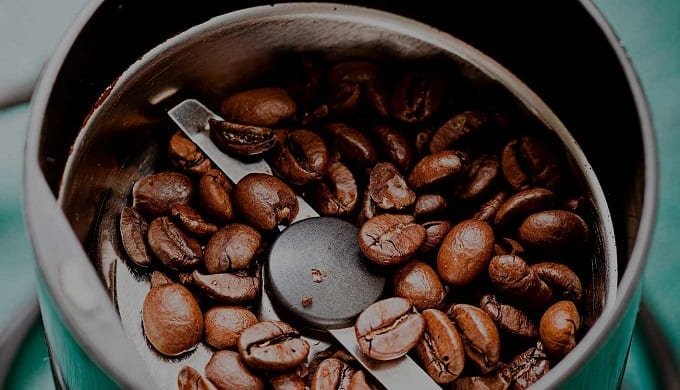
Blade grinders produce an uneven and inconsistent grind size, meaning that some of your coffee grounds will be coarse while others are finer. This can cause your coffee grounds to be either over or under-extracted and result in an inconsistent and less flavourful cup of joe.
The friction in automatic blade grinders can also cause the roasted coffee beans to heat up lose some of their flavors.
Burr Grinder
The Burr grinder is a more pricey coffee grinder, but there is a good reason for this, and you will likely find that the extra investment is worth it in the long run.
How does a burr grinder work?
The burr coffee grinder uses flat ridges called burrs to grind the coffee beans between the surface of the burrs, applying uniform pressure to the coffee beans. It also doesn’t spin quickly. This precise pressure at a low speed creates even and consistently sized coffee grounds.
A decent burr grinder features various settings that allow you to adjust the coffee grind size. Although it costs more, the burr grinder is the preferred coffee grinder of professional baristas and coffee lovers alike.
Automatic grinders vs manual grinders?
Either way, both models will get the job done. The main variant is electricity vs human effort. Automatic grinders will do all the work for you in a short space of time whereas the manual grinder must be done by hand and will take a little longer to use.
The manual model
This coffee grinder is ideal for popular brewing methods, including pour-over, AeroPress, and Chemex. An automatic model will also get the job done, but the manual model can often produce a better result. Manual models are ideal if you just want to make coffee for yourself at home and experiment with brewing methods. They also look pretty cool and if you’re a bit old school like us at Bushy Beard, you might prefer the manual model.
The automatic model
If you are intent on producing coffee for a crowd you’ll need an automatic grinder, as it will do a lot of the work for you and speed up the brewing process. Even if you are just making coffee for yourself but don’t fancy the hassle of using the manual grinder, there’s nothing wrong with an option for the automatic model.
The Settings Of Manual Burr Grinder To Use For Different Grind Size
If you don’t know the setting and appropriate grinding time, you might not get the perfect grind size. Follow the following settings for precise grinding of coffee beans every time.
| Type of coffee | Handground setting | Amount in grams | Time in seconds |
| Espresso | 1 | 10g | 290 |
| Pour Over | 3.5 | 10g | 57 |
| Aeropress | 2.5 | 10g | 91 |
| French Press | 6.5 | 10g | 20 |
| Cold Brew | 7 | 10g | 18 |
| Chemex | 5 | 10g | 28 |
FAQs
What size should I grind my coffee?
It all comes down to the style of coffee making, the brewing method and time used, and how strong you like your coffee. Check the coffee grind size chart above for recommended coffee ground size and use this as your starting point before you begin experimenting with your brewing.
How do you measure coffee grind size?
Coffee ground size isn’t really measured in exact metrics but is compared to other existing elements around us for a more flexible and realistic sizing guide. For example, extra coarse coffee grounds are roughly the size of a peppercorn, whereas the coarse grounds look like sea salt, and so on.
Does grind size affect coffee flavor?
100% yes! The coffee ground size will have a noticeable impact on the flavor intensively of your cup of joe. If the coffee grounds are too fine, they can be over-extracted, leading to a bitter-tasting coffee, whereas the extra course grounds can be under-extracted if the brewing time is too short, leading to a salty, or sour flavored brew.
Does finer grind make stronger coffee?
Yes. Finer coffee grounds produce an intense coffee flavor as they have a larger surface area for extraction. This is why espressos are strong and high in caffeine as they are made using fine coffee grounds.
To learn more, check out, Espresso vs Latte and What types of coffee have the most caffeine.
What is the best coffee grind?
This will depend on the type of coffee you are trying to make and the method you are using to make it. If you want to experiment with coffee ground size, it’s best to start with medium-sized coffee grounds and adjust your grind size accordingly from their. For a more precise size guide check the chart above.
What happens if the coffee grind is too coarse?
If the coffee grounds are too coarse then it is likely your coffee beans will be under-extracted which will cause your brew to taste salty or sour. This is not very pleasant. If this happens then reduce the size of your coffee grounds or increase the brewing time.
Are coffee grinders worth it?
Absolutely. At Bushy Beard, we recognize the impact a good coffee grinder can have on the quality of your cup of joe. If you are a bit of a coffee lover, who drinks multiple cups a day and wants to start experimenting with various coffee blends, flavor profiles, and brewing methods then we really can’t recommend them enough. Getting yourself a decent burr coffee grinder will up your coffee brewing game significantly.
How long is coffee good after grinding?
If the grounds are stored in an airtight container, they will remain fresh for up to 2 weeks.
Is it OK to grind coffee beans the night before?
Yes, you can but make sure you store them in an airtight container or bag so they don’t lose the freshness and flavor. The best time to grind your coffee beans is immediately before brewing.
Is ground coffee cheaper than the whole bean?
Yes. Whole coffee beans are more expensive than preground coffee. But remember if you are buying pre-ground coffee the flavor will not be as good and pre-ground coffee usually comes in a standard size, which means you might not get the best grind size for your cup of joe.
Final Words
It might seem insignificant but the size of your coffee grounds can have a big impact on the flavor of your coffee. Don’t overlook the importance of the Coffee Grind Size Chart, the results will show in your coffee cup. Make a note of the coffee grind size chart or print a copy out for your kitchen so you remember when you are experimenting with different methods and blends. We hope this has cleared up a few of your coffee-related questions. Let us know in the comments if you found this helpful.







